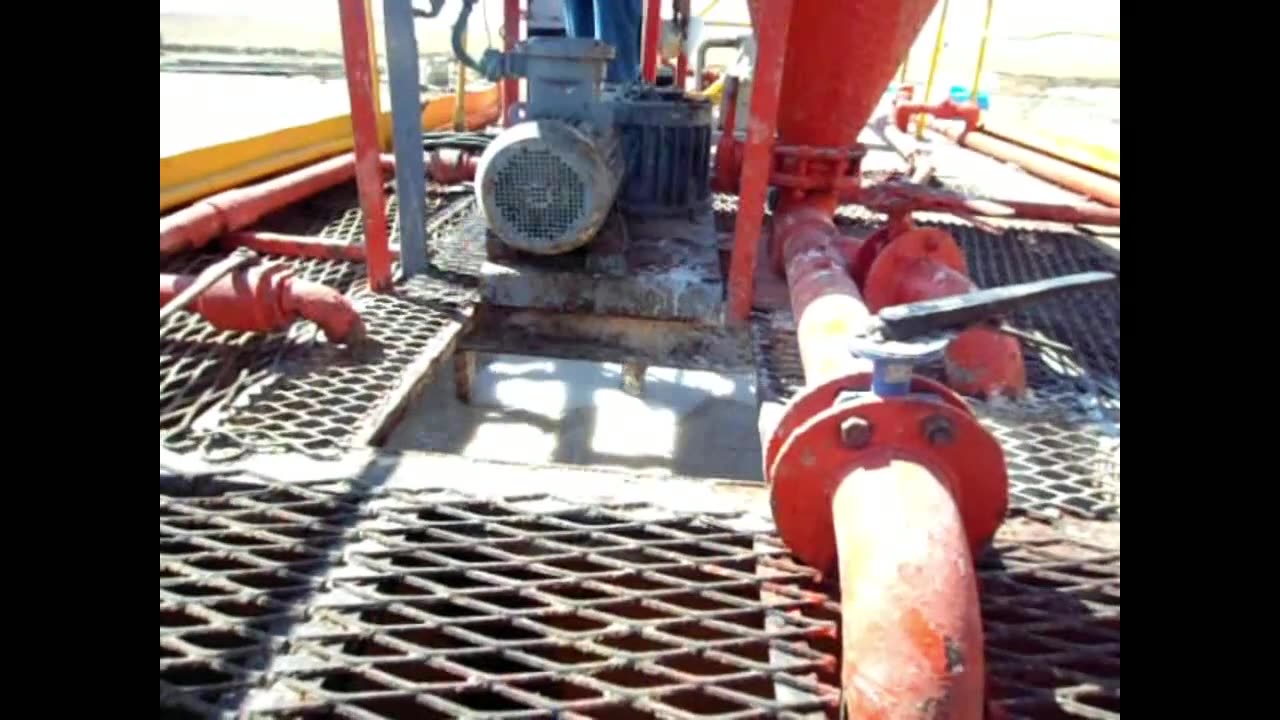Premium Only Content

Unsafe Conditions On The Oil Rig
**Unsafe conditions on an oil rig** can pose severe risks to personnel, equipment, and the environment. Identifying and addressing these conditions is critical to ensuring safety and preventing accidents, such as fires, explosions, or injuries.
---
### **Common Unsafe Conditions on an Oil Rig**
#### 1. **Slippery or Cluttered Work Surfaces**
- Oil, grease, or water spills on decks.
- Improper storage of tools, hoses, or cables causing tripping hazards.
#### 2. **Inadequate Housekeeping**
- Accumulation of debris or waste materials in work areas.
- Poor organization leading to restricted access to emergency equipment.
#### 3. **Faulty Equipment**
- Worn-out or improperly maintained machinery (e.g., drills, cranes).
- Defective safety systems such as alarms, brakes, or pressure relief valves.
#### 4. **Electrical Hazards**
- Exposed or damaged wiring and circuits.
- Improper grounding of electrical systems.
#### 5. **Improper Handling of Hazardous Materials**
- Leaking fuel or chemical storage containers.
- Lack of proper labeling or incompatible material storage.
#### 6. **Inadequate Ventilation**
- Poor ventilation in confined spaces, leading to the buildup of toxic gases or fumes.
- Inefficient gas detection systems.
#### 7. **Fire and Explosion Risks**
- Presence of flammable materials near ignition sources.
- Malfunctioning fire suppression systems or insufficient fire extinguishers.
#### 8. **Insufficient Lighting**
- Poorly lit work areas increasing the risk of accidents, especially at night.
#### 9. **Improper Use or Absence of PPE**
- Workers not wearing helmets, gloves, goggles, or flame-resistant clothing.
- Use of incorrect PPE for specific tasks.
#### 10. **Structural Issues**
- Corrosion, cracks, or damage in rig components like platforms, ladders, or handrails.
#### 11. **Improper Lifting and Rigging Practices**
- Overloading cranes or slings.
- Use of damaged or inappropriate lifting equipment.
#### 12. **Weather and Environmental Conditions**
- High winds, storms, or extreme temperatures affecting operations.
- Slippery surfaces due to rain or ice.
#### 13. **Communication Failures**
- Malfunctioning radios or alarms.
- Lack of clear instructions during critical operations.
#### 14. **Fatigue and Human Factors**
- Long shifts or inadequate rest leading to reduced attention and errors.
- Stress or insufficient training impacting performance.
#### 15. **Emergency Preparedness Gaps**
- Inaccessible or outdated emergency exits and equipment.
- Inadequate training or drills for fire, spill, or evacuation scenarios.
---
### **Addressing Unsafe Conditions**
1. **Regular Inspections and Maintenance**
- Conduct frequent safety checks and repair defective equipment.
2. **Employee Training**
- Educate workers on hazard identification, safe practices, and emergency responses.
3. **Use of Personal Protective Equipment (PPE)**
- Ensure availability and proper use of PPE for all tasks.
4. **Housekeeping Standards**
- Maintain a clean and organized workspace.
5. **Hazard Communication**
- Clear labeling and communication about hazardous materials and conditions.
6. **Emergency Preparedness**
- Regular drills, accessible safety equipment, and well-defined evacuation procedures.
---
Would you like a detailed guide on mitigating specific hazards or training resources for oil rig safety?
-
 1:25:53
1:25:53
Kim Iversen
3 days agoStriking Back: Taking on the ADL’s Anti-Free Speech Agenda
74K33 -
 49:35
49:35
Donald Trump Jr.
12 hours agoA New Golden Age: Countdown to Inauguration Day | TRIGGERED Ep.202
154K170 -
 1:14:34
1:14:34
Michael Franzese
10 hours agoWhat's Behind Biden's Shocking Death Row Pardons?
68.7K47 -
 9:49
9:49
Tundra Tactical
9 hours ago $15.74 earnedThe Best Tundra Clips from 2024 Part 1.
88.6K7 -
 1:05:19
1:05:19
Sarah Westall
9 hours agoDying to Be Thin: Ozempic & Obesity, Shedding Massive Weight Safely Using GLP-1 Receptors, Dr. Kazer
78.5K20 -
 54:38
54:38
LFA TV
1 day agoThe Resistance Is Gone | Trumpet Daily 12.26.24 7PM EST
57.3K9 -
 58:14
58:14
theDaily302
18 hours agoThe Daily 302- Tim Ballard
57.1K8 -
 13:22
13:22
Stephen Gardner
12 hours ago🔥You'll NEVER Believe what Trump wants NOW!!
106K263 -
 54:56
54:56
Digital Social Hour
1 day ago $10.83 earnedDOGE, Deep State, Drones & Charlie Kirk | Donald Trump Jr.
59.2K5 -
 DVR
DVR
The Trish Regan Show
13 hours agoTrump‘s FCC Targets Disney CEO Bob Iger Over ABC News Alleged Misconduct
64.2K37